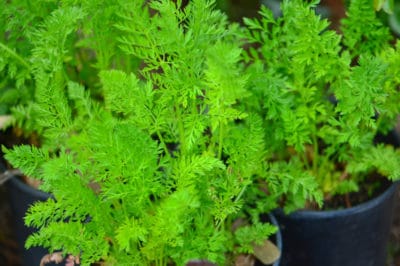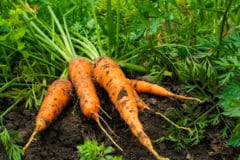Why grow carrots in pots.
Carrots require little maintenance to grow well; they are suited to pots, and require no more work to grow there. Because your containers are less likely to develop weeds or pests, growing carrots may be easier in pots than in the ground.
Start with the right carrot for your container.
Because carrots are a root vegetable, you’ll need a pot deep enough to accommodate whatever variety you decide to grow. Chantenay and Nantes carrots are shorter than many varieties, but other types need pots that are eight inches deep or more. Check your seed packets to determine the size of carrot you’ve selected and pick your container accordingly.
Pick a potting medium.
To fill your plant pots with growing medium, you can use anything from potting soil to dirt from your garden. Loose, sandy soil is the best option for carrots; avoid using manure or products containing nitrogen, both of which are detrimental to carrots.
Sow your seeds the easy way.
Don’t worry about precise planting at this point. Instead, use the easy method to plant your carrots.
- Moisten the soil in the pot
- Sprinkle seed as evenly as possible over the soil
- Carefully place more soil over the top of the seeds
- Water again, gently
Maintain your plants.
When your plants are fully germinated and you can see tops peeking above the soil, thin them to a thumb’s width apart. A month later, or when your starts are about three to four inches tall, thin again, so that your plants end up about two inches apart from one another.
Just after the second thinning is a good time to start feeding your carrots. Any organic, low-nitrogen fertilizer, organic compost, or plant food will work, and should be applied every couple of weeks.
Water and wait.
Carrots require quite a bit of water to grow, so keep an eye on moisture levels in your pots. Water whenever the top couple of inches of soil are dry; in the warm months, this may be necessary several times a week.
Your carrots are ready to harvest once they reach a shoulder width of about an inch and a quarter. You can leave them longer if you want bigger carrots, or you can harvest tasty little baby carrots a few weeks earlier.












